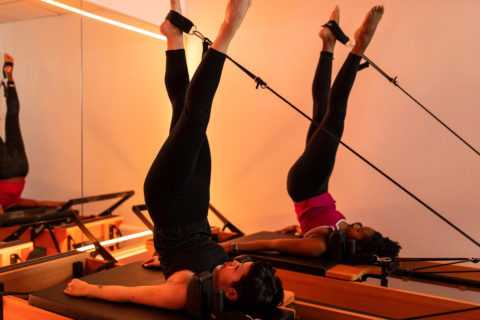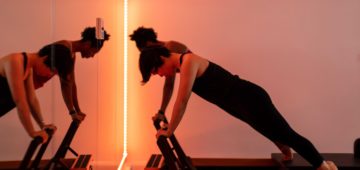Plantar fasciitis is a lesion that occurs in the plantar fascia, located on the sole of the foot and it can cause pain, burning and stiffness throughout the plantar and heel extension.
For example, in the case of runners, the pain may intensify even more after long periods of walking or running, especially if the person has the wrong “step type”. Therefore, the inflammation can affect anyone, but it’s much more common in athletes.
Read on to understand how Reformer Pilates can help treat the lesion!
Benefits of Reformer Pilates for plantar fasciitis

The Reformer Pilates is a method that works with strengthening and flexibility exercises, which are essential for people who suffer from plantar fasciitis. Stretching exercises have already shown good results against pain!
However, it is worth saying that the exercises performed in a Reformer Pilates class need to be suitable according to the student’s situation, because when these muscles are strengthened too much, the tension increases more, which can worsen the pain.
Therefore, strengthening should be done with light loads or just body weight. During a Reformer Pilates session, the practitioner learns how to correctly carry weight on the feet, that is, the work of distributing the weight of the body in a balanced way on the feet. Besides, Reformer Pilates teachers guide how to step on! That’s why the Reformer Pilates is a really effective treatment for plantar fasciitis!
The Reformer Pilates approach to the treatment includes stretching, postural correction and strengthening for all muscle groups in the body. As with any other type of exercise, Reformer Pilates classes need to be suitable for each type of student. For that, check out some important tips below:
- Posterior chain stretching is essential for decompression of the affected region and can be performed on the ground, with accessories.
- Still thinking about the discomfort, it may be necessary to “disrespect” the classic sequence of the Reformer Pilates method and alternate the exercises for lower limbs, upper limbs, abdomen, spine and posture, in order to not overload the ankle, for example.
- As we are treating the plantar fasciitis and not just conditioning the patient, we must always pay attention to the pain.Our initial goal is to relieve the pain, so we need to explore exercises that can reduce discomfort and we should adapt or avoid any exercise that might do the opposite.
- During the Pilates session, it’s very important to work with exercises to distension the fascia, with foot massagers or balls, for example.
The Reformer Pilates Method is extremely safe and doesn’t cause any risks of injuries when applied by qualified and experienced professionals. And in the case of inflammation and irritation, such as plantar fasciitis, all care must be taken.
Come visit us and start your Reformer Pilates classes at the Kore Gallery! We respect your limits and develop a focused exercise plan, starting with light loads, low spring and many stretches to treat plantar fasciitis and prevent the pain from ever coming back.






